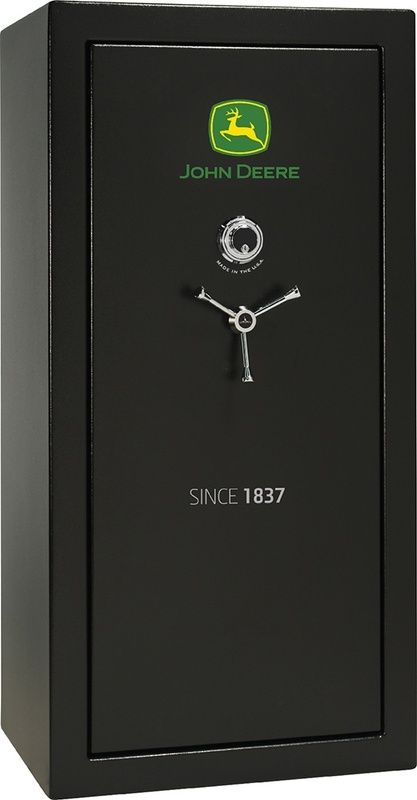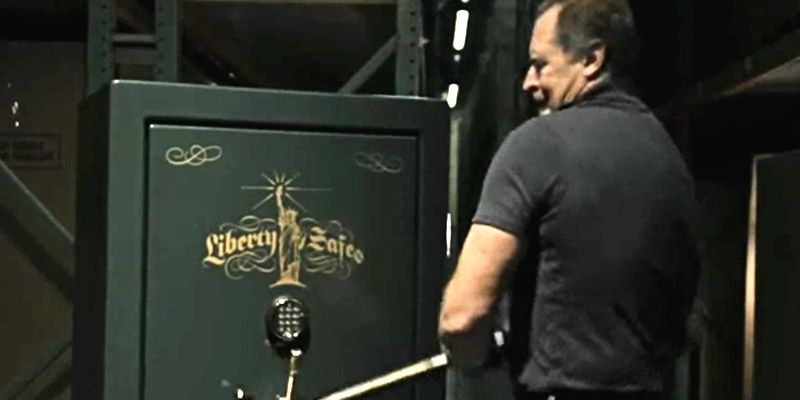
Liberty Safe Security Features
It's no coincidence Liberty Safes are the #1 selling brand of home and gun safes in America. Liberty has earned its reputation by producing high-quality fire and security safes with reliable long-term performance. Don't just take our word for it though - check out some of the security features that make Liberty Safes best in class.
Uni-body construction
Just like every home needs a strong foundation, a safe needs a tough outer shell. Liberty Safes feature a uni-body construction made up of 2 pieces of coiled steel. The steel pieces are cut, roll-formed then folded to minimize welding.
Typically, safes are welded on the top-back corner. Liberty Safes use an overlapping joint on the back, not the edge, to create a stronger bond. This joint makes the safe more resistant to bending, prying, cutting and distortion. The design also leaves no seams on the top, which is the most vulnerable place for breaking and prying welds.
Composite doors
Liberty's steel composite doors utilize a one-piece design for added strength. The doors are cut and folded to be 1-in. or 1 1/2-in. thick. The thicker edges are harder to pry and, unlike plate doors, offer increased fire protection all the way to the edge.
Internal hinges
Inside the safe attached to the safe body are the ball-bearing operated hinges. The hinges are welded inside to prevent thieves from tampering with them. They provide extra resistance against prying and bending of the door and act as an automatic door stop.

UL Listed locks
Underwriters Laboratories is a world-leading organization in product safety testing and certification. They put Liberty's locks to the test and certified the mechanical, electronic, and biometric locks as UL Listed.
Mechanical locks
S&G combination dial locks come standard on all large-capacity Liberty Safes. If you're looking for a simple locking system that doesn't require batteries, mechanical is the way to go. These locks feature dual functioning heat and drill resistant relockers which will lock up the last tumbler if the lock is tampered with.
All Premium and below models come standard with a 6741 lock, which has a +1.25 number dialing tolerance, die-cast Zamak lever and wheel centers. The Limited models come standard with the upgraded 6730 lock, which has the same +1.25 dialing tolerance but has dual locking wheels and brass wheel centers for extended durability. Both the 6741 and 6730 can easily be switched over to an electronic lock.
Electronic locks
Electronic locks are popular for their quick access and the ability to easily change the combination at any time without help from a locksmith. The SecuRam locks are battery operated and require Duracell batteries which can be changed from the front of the safe. They're available in three models: TopLit (available on Value and Economy series safes), BackLit (available on Deluxe series safes), and ProLogic (available on Premium and Limited series safes). These models have been tested and certified as EMP resistant by Dayton T. Brown Laboratories, the lab that tests military equipment.
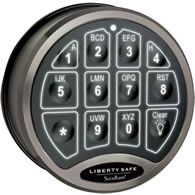
Biometric locks
S&G biometric locks have fingerprint technology for quick and easy, yet very secure, access. They also include a backup keypad function (the same as S&G electronic locks) as a secondary security measure.
Relocker devices
Unlike most competitor's safes, Liberty Safes have internal relockers as an extra layer of security. Relockers have a spring-loaded trigger that locks the last tumbler if the lock is tampered with. Two types of relockers are used in Liberty Safes:
- Inside the lock is a spring-loaded relocker that fires whenever a thief attempts to torch the lock or remove the backplate
- Outside the lock is a second relocker that connects the backplate to the spring-loaded firing pin. If the backplate is punched off, the external relocker fires and permanently locks the safe, preventing the locking bolts from retracting
Hardplates
A hardplate is heat-treated steel plate placed in front of the lock to protect from drilling and punching. Liberty uses two types of hardplates: triple layered (Premium series in below) and ball-bearing (Limited series). The triple-layered hardplate shakes and chews through drill bits. UL couldn't even get through the second of the three hardplates during their testing. The ball-bearing hardplates keep drill bits spinning or snap them entirely.
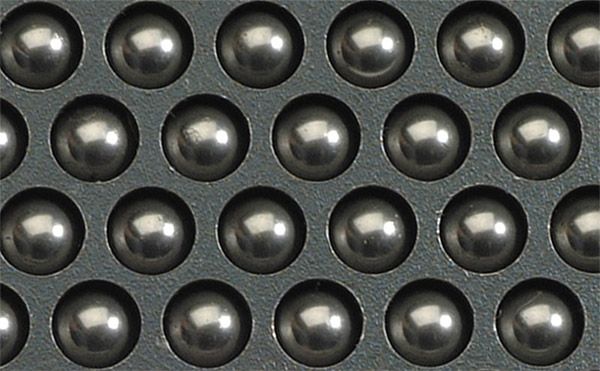
Locking mechanisms
John Deere Liberty Safes come with 2 types of locking mechanisms:
- Direct-drive cam is a simple, yet effective, locking mechanism for Value, Economy and Deluxe series safes.
- DX-90 Monster Mech, over-center, direct-drive cam improves side-bolt punching protection and removes pressure from the locking bolt with it's "deal lock" system. The DX-90 Monster Mech mechanism can be found on Premium and Limited series safes.
All Liberty Safes include a patent-pending slip-clutch mechanism connected to the SURETIGHT handle, lock and active bolts for added security.
SURETIGHT handle with slip-clutch
Liberty Safes come standard with a SURETIGHT handle with slip-clutch technology, which protects the locking mechanism by slipping whenever someone tries to torque the handle. It's secured with a lock fitted bolt so that the handle won't come loose.
Locking systems
Liberty offers two styles of locking systems: bolts and bars. Bolts are the standard system found in most safes. They come in lengths of 1-3/4" or 2-3/8" and diameters of 1", 1-1/4", or 1-1/2". Locking bolts can be located on one, two, or all four sides of the door. Doors with bolt locking systems include Liberty's Easy Glide Bolt Protectors, which provide a smooth and tight operation of locking bolts.
Locking bars are Liberty's latest advancement in safe security. Their patented military style locking bars are a single solid piece of 3/16" to 1/2" thick steel. Locking bars provide more surface area than bolts, which helps fight against pry attacks.
Anti-pry tabs and security door adjusters
Anti-pry tabs increase resistance from pry attacks with reinforced brackets on the top and bottom of the pin-bar brackets. Anti-pry tabs are included on Premium and Limited series safes.
Security door adjusters are added to the frame so the door and locking bolts can be tightened. This creates a tighter seal to protect against fire and increases the door's thickness. Security door adjusters can be found on all Liberty Safes.
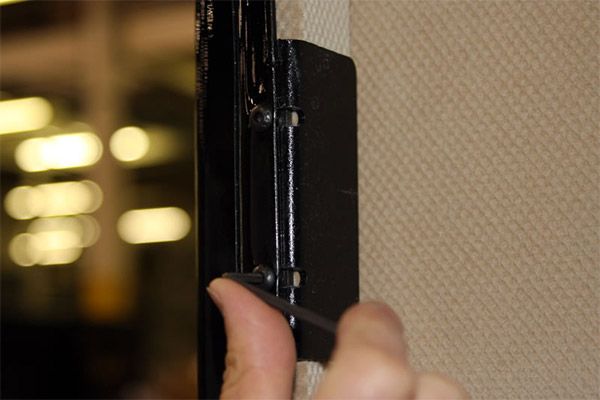
Bolt down anchoring
For maximum security, Liberty Safes can be lag bolted to the floor. If your safe is anchored to the floor, you can be sure it won't be going anywhere. With the safe anchored upright, it's almost impossible to gain any leverage when prying on the door.
Liberty has gone to great lengths to help secure your valuables. The advanced security features found in Liberty Safes are second to none. If you're looking for a high-quality safe that will last you a lifetime, visit the Liberty Safes page or come by one of our stores to compare models. You won't be disappointed.

